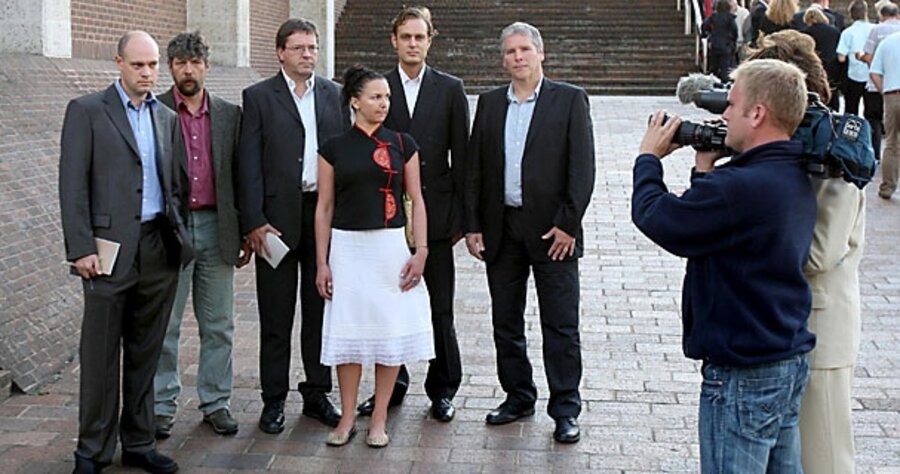Greenpeace activists cleared of damaging UK power plant
Loading...
A British court cleared six Greenpeace activists Monday of causing more than $50,000 of criminal damage to a coal-fired power plant. The court ruled that, by shutting down the plant, the activists were preventing greater property damage from climate change.
Five of the activists scaled the 650-foot smokestack at Kingsnorth power station with the intention of painting "Gordon bin it" on it (that would be British English for "Prime Minister Gordon Brown, throw it out"). They got as far as writing "Gordon" before someone climbed up there to serve them a court injunction.
The activists argued that they possessed a "lawful excuse" for trying to shut the plant down, because they were trying to prevent the coal plant from causing greater property damage around the world by way of global warming. An example of lawful excuse, as cited by the prosecution and quoted in a Greenpeace blog, would be breaking a window to rescue a child from a burning car.
The Guardian details the expert testimony marshaled by the activists:
The court had heard from Professor Jim Hansen, one of the world's leading climate scientists, that the 20,000 tonnes of carbon dioxide emitted daily by Kingsnorth could be responsible for the extinction of up to 400 species. Hansen, a Nasa director who advises Al Gore, the former US presidential candidate turned climate change campaigner, told the court that humanity was in "grave peril". "Somebody needs to step forward and say there has to be a moratorium, draw a line in the sand and say no more coal-fired power stations."
It also heard [opposition leader] David Cameron's environment adviser, millionaire environmentalist Zac Goldsmith, and an Inuit leader from Greenland both say climate change was already seriously affecting life around the world. Goldsmith told the court: "By building a coal-power plant in this country, it makes it very much harder [to exert] pressure on countries like China and India" to reduce their burgeoning use of the fossil fuel.
The court was told that some of the property in immediate need of protection included parts of Kent at risk from rising sea levels, the Pacific island state of Tuvalu and areas of Greenland. The defendants also cited the Arctic ice sheet, China's Yellow River region, the Larsen B ice shelf in Antarctica, coastal areas of Bangladesh and the city of New Orleans.
The jury was told that Kingsnorth emitted the same amount of carbon dioxide as the 30 least polluting countries in the world combined – and that there were advanced plans to build a new coal-fired power station next to the existing site on the Hoo peninsula.
The jury – nine men and three women – found the testimony compelling, and found the six activists not guilty.
Greenpeace is delighted at the ruling. "This verdict marks a tipping point for the climate change movement," said Ben Stewart, one of the six defendants, as reported by Reuters:
"If jurors from the heart of Middle England say it's legitimate for a direct action group to shut down a coal-fired power station because of the harm it does to our planet, then where does that leave government energy policy?
"We have the clean technologies at hand to power our economy, it's time we turned to them instead of coal."
Emily Highmore, a spokeswoman for E.ON, the German energy firm that operates the plant, told the BBC that she was less than thrilled at the outcome.
She said: "We respect people's right to protest, but what Greenpeace did was hugely irresponsible. It put people's lives at risk and that is clearly completely unacceptable."
Ms Highmore called for an "open and honest debate" about the challenges of energy and climate change, but added: "That's a debate that shouldn't be taking place at the top of a chimney stack."





